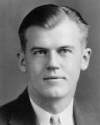 | TODAY IN SCIENCE HISTORY
NEWSLETTER - 16 JANUARY |
 On 16 Jan 1853, André Michelin, was born, a French industrialist who, with his younger brother Édouard, founded Michelin Tyre Co. in 1888. The Michelins made the first pneumatic tyres that could be easily removed for repair, for bicycles (1891) and for automobiles (1895). They introduced tire tread patterns, low-pressure balloon tires, and steel-cord tires. The company created a tourist guide organization which placed milestones on French roads and established a standard road map service for most of Europe. André created Michelin guides to promote tourism by car. The first Red Guide, with restaurant ratings, was published in 1900. In an article from The Magazine of Business (1922), H.M. Davidson described Édouard Michelin as a man “Who tries to give his customers what they want before they know they want it.” On 16 Jan 1853, André Michelin, was born, a French industrialist who, with his younger brother Édouard, founded Michelin Tyre Co. in 1888. The Michelins made the first pneumatic tyres that could be easily removed for repair, for bicycles (1891) and for automobiles (1895). They introduced tire tread patterns, low-pressure balloon tires, and steel-cord tires. The company created a tourist guide organization which placed milestones on French roads and established a standard road map service for most of Europe. André created Michelin guides to promote tourism by car. The first Red Guide, with restaurant ratings, was published in 1900. In an article from The Magazine of Business (1922), H.M. Davidson described Édouard Michelin as a man “Who tries to give his customers what they want before they know they want it.” |
 On 16 Jan 1932, Dian Fossey was born, an American zoologist famous for her daily study of the mountain forest gorillas. Today's Science Store pick is: Gorillas in the Mist, by Dian Fossey Dr., the riveting account of her thirteen years in a remote African rain forest with the great apes. Her extraordinary efforts to ensure the future of the rain forest and its remaining mountain gorillas are captured in her own words. Fossey discovered, despite their peaceable way of life, the gorillas had many enemies in the form of poachers who hunted them for their hands, skins, and heads to be sold to the tourist market. She was outspoken for the protection of the gorillas and the suppression of the poachers' black market. Although Fossey's work ended tragically in her murder, probably by poachers, this book remains an invaluable testament to one of the longest-running field studies of primates and reveals her undying passion for her subject. It is available New from $4.99. Used from $2.49. (As of time of writing.). On 16 Jan 1932, Dian Fossey was born, an American zoologist famous for her daily study of the mountain forest gorillas. Today's Science Store pick is: Gorillas in the Mist, by Dian Fossey Dr., the riveting account of her thirteen years in a remote African rain forest with the great apes. Her extraordinary efforts to ensure the future of the rain forest and its remaining mountain gorillas are captured in her own words. Fossey discovered, despite their peaceable way of life, the gorillas had many enemies in the form of poachers who hunted them for their hands, skins, and heads to be sold to the tourist market. She was outspoken for the protection of the gorillas and the suppression of the poachers' black market. Although Fossey's work ended tragically in her murder, probably by poachers, this book remains an invaluable testament to one of the longest-running field studies of primates and reveals her undying passion for her subject. It is available New from $4.99. Used from $2.49. (As of time of writing.). | | For picks from earlier newsletters, see the Today in Science History Science Store home page. | |
 | I feel more comfortable with gorillas than people. I can anticipate what a gorilla's going to do, and they're purely motivated. - Dian Fossey, American zoologist (born 16 Jan 1932).  |
 | I never got tired of watching the radar echo from an aircraft as it first appeared as a tiny blip in the noise on the cathode-ray tube, and then grew slowly into a big deflection as the aircraft came nearer. This strange new power to “see” things at great distances, through clouds or darkness, was a magical extension of our senses. It gave me the same thrill that I felt in the early days of radio when I first heard a voice coming out of a horn... - Robert Hanbury Brown, English astronomer (died 16 Jan 2002). |
| The laws of probability, so true in general, so fallacious in particular. - Edward Gibbon, English historian (died 16 Jan 1794).  |
| Before you look at today's web page, see if you can answer some of these questions about the events that happened on this day. Some of the names are very familiar. Others will likely stump you. Tickle your curiosity with these questions, then check your answers on today's web page. |
 | Dian Fossey, born 16 Jan 1932, was an American zoologist who became the world's leading authority on certain animals of central Africa. She set up the Karisoke Research Center. Living a solitary life for many years, she observed these animals� habits and gradually gained their acceptance.
 In which African country did she carry out her research? |
 | On 16 Jan 1901, Frank J. Zamboni was born, the American inventor of the Zamboni ice resurfacer used in ice skating rinks. After several prototypes, he patented an improved model. It combined the processes of scraping, removing shaving, and applying a wash water system.
 In which decade did Zamboni patent his machine? |
 | An American physicist (1901-1967) invented a type of high-voltage electrostatic generator that serves as a type of particle accelerator. It uses the principle of electric fields that charges on a dome can leap off at points where the curvature is great. Thus, a dome of great radius will inhibit the electric discharge and create stored charge at a high voltage. This device has found widespread use not only in atomic research but also in medicine and industry.
 Can you name this scientist? |
 | William Henry Pickering (1858-1938) was an American astronomer who discovered the first moon with retrograde motion (1899). Phoebe had an orbital motion directed in an opposite sense to that of the planets.
 Phoebe is a moon of which planet? |
| On 16 Jan 1909, a British explorer claimed to have found the magnetic south pole.
 Who was the British explorer who believed he had found the magnetic South Pole in 1909? |
| On 16 Jan 2006, a capsule returned from a six-year mission and parachuted to Earth, the first to successfully deliver samples of material taken from space since the Apollo missions.
 The collection of what material was the primary goal of this mission? |
When you have your answers ready to all the questions above, you'll find all the information to check them, and more, on the January 16 web page of Today in Science History. Or, try this link first for just the brief answers.
Fast answers for the previous newsletter for January 15: Edward Teller • ratio of chronological age to mental age (times 100 = IQ) • mollusks • decade including the year 1955 • amplifying feeble electric currents, as in telephone circuits • Elisha Otis. |
 If you enjoy this newsletter, the website, or wish to offer encouragement or ideas, please send feedback by using your mail reader Reply button. If you enjoy this newsletter, the website, or wish to offer encouragement or ideas, please send feedback by using your mail reader Reply button.
Your click on a StumbleUpon, Google+ or Facebook social button on the site webpages is also a welcome sign of appreciation. Thank you for using them. |
To find citations for quotations go to the corresponding webpage by clicking on the “quotes” balloon icon. Sources for the thumbnails appear on today's webpage with the corresponding item.
� This newsletter is copyright 2014 by todayinsci.com. Please respect the Webmaster's wishes and do not put copies online of the Newsletter � or any Today in Science History webpage. (If you already have done so, please remove them. Thank you.) Offline use in education is encouraged such as a printout on a bulletin board, or projected for classroom viewing. Online, descriptive links to our pages are welcomed, as these will provide a reader with the most recent revisions, additions and/or corrections of a webpage. For any other copyright questions, please contact the Webmaster by using your mail reader Reply button. |
--
If you do not want to receive any more newsletters,
Unsubscribe To update your preferences and to unsubscribe visit
this link 


 On 16 Jan 1853, André Michelin, was born, a French industrialist who, with his younger brother Édouard, founded Michelin Tyre Co. in 1888. The Michelins made the first pneumatic tyres that could be easily removed for repair, for bicycles (1891) and for automobiles (1895). They introduced tire tread patterns, low-pressure balloon tires, and steel-cord tires. The company created a tourist guide organization which placed milestones on French roads and established a standard road map service for most of Europe. André created Michelin guides to promote tourism by car. The first Red Guide, with restaurant ratings, was published in 1900. In an article from The Magazine of Business (1922), H.M. Davidson described Édouard Michelin as a man “Who tries to give his customers what they want before they know they want it.”
On 16 Jan 1853, André Michelin, was born, a French industrialist who, with his younger brother Édouard, founded Michelin Tyre Co. in 1888. The Michelins made the first pneumatic tyres that could be easily removed for repair, for bicycles (1891) and for automobiles (1895). They introduced tire tread patterns, low-pressure balloon tires, and steel-cord tires. The company created a tourist guide organization which placed milestones on French roads and established a standard road map service for most of Europe. André created Michelin guides to promote tourism by car. The first Red Guide, with restaurant ratings, was published in 1900. In an article from The Magazine of Business (1922), H.M. Davidson described Édouard Michelin as a man “Who tries to give his customers what they want before they know they want it.” 


 In which African country did she carry out her research?
In which African country did she carry out her research? 
 In which decade did Zamboni patent his machine?
In which decade did Zamboni patent his machine? 
 Can you name this scientist?
Can you name this scientist? 
 Phoebe is a moon of which planet?
Phoebe is a moon of which planet?  Who was the British explorer who believed he had found the magnetic South Pole in 1909?
Who was the British explorer who believed he had found the magnetic South Pole in 1909?  The collection of what material was the primary goal of this mission?
The collection of what material was the primary goal of this mission?  If you enjoy this newsletter, the website, or wish to offer encouragement or ideas, please send feedback by using your mail reader Reply button.
If you enjoy this newsletter, the website, or wish to offer encouragement or ideas, please send feedback by using your mail reader Reply button. 

Δεν υπάρχουν σχόλια:
Δημοσίευση σχολίου